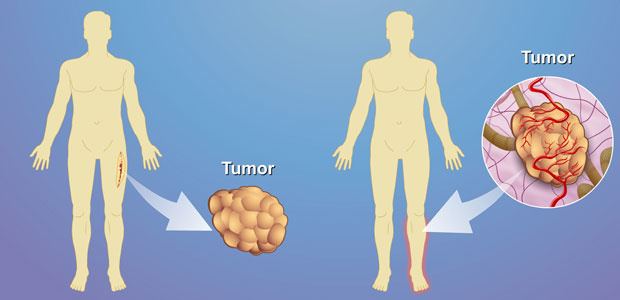
Early soft tissue tumors have few obvious systemic symptoms, while advanced malignant soft tissue tumors may cause symptoms like fever, anemia, loss of appetite, weight loss. It is not difficult to distinguish between malignant and benign soft tissue tumors. Based on the patient’s clinical situation and history and combined with the following inspection methods, soft tissue tumors can be detected:
1. X -ray examination: X -ray is helpful in further understanding the range and transparency of soft tissue tumor and its relationship with nearby sclerotin. The clear boundary often suggests benign tumors while clear boundary with calcifications often suggests malignant soft tissue tumors, which are often seen in synovial sarcoma, rhabdomyosarcoma, and so on.
2. Ultrasound imaging examination: it can reveal the range and envelope boundary of the tumor, as well as the echo of internal tumor tissues, so as to distinguish whether it is benign or malignant. Malignant soft tissue tumor has big body, unclear boundary, and vague echo, which usually occur in rhabdomyosarcoma, synovial myosarcoma, malignant fibrohistiocytoma, etc. Ultrasound can also guide acupuncture aspiration cytology examination for deep tumors.
3. CT examination: as CT can identify the density and space of soft tissue tumor, it is a commonly used method to diagnose soft tissue tumor in recent years.
4. MRI examination: it can make up the shortcoming of X-ray in diagnosing soft tissue tumors. It can reveal all the layers of the tissues and the range of the tumor with a longitudinal section. It provides even clearer images of retroperitoneal soft tissue tumors, tumors spreading to the butt or thigh from pelvis and tumors in the popliteal fossa, as well as tumor infiltration to bone or bone marrow. It is a good basis to settle the treatment plan.
5. Pathological examination
(1) Cytological examination: it is a simple, quick and accurate pathological examination method. It is most suitable for following situations:
a. Ulcerated soft tissue tumors: microscopy on smear or scraping of the sample.
b. soft tissue tumor with pleural fluid or ascites: centrifugalize and enrich the fresh sample and then make the smear
c. acupuncture aspiration smear is suitable for tumors that have big body, situate in deep area and to be treated with chemotherapy or radiotherapy, as well as transferred and recurrent lesion.
(2) Protractor biopsy: it can be used when ulceration has happened to the soft tissue tumor and cytological smear can not diagnose the tumor.
(3) Incisional biopsy: it is mainly used in surgery.
(4) Excisional biopsy: it is suitable for small soft tissue tumors. The normal tissues surrounding the tumor can also be taken for pathological examination.
As the tissue source of soft tissue tumor are complicated and various, apart from common HE staining, most diagnoses of the tumors require assistance of immunohistochemistry or electron microscope during pathological examination.
Experts from Modern Cancer Hospital Guangzhou remind that: soft tissue tumors can get a better treatment effect with early detection and treatment. Therefore, once any discomfort happens, one should go to regular hospital for examination and treatment as soon as possible.
 viber
viber